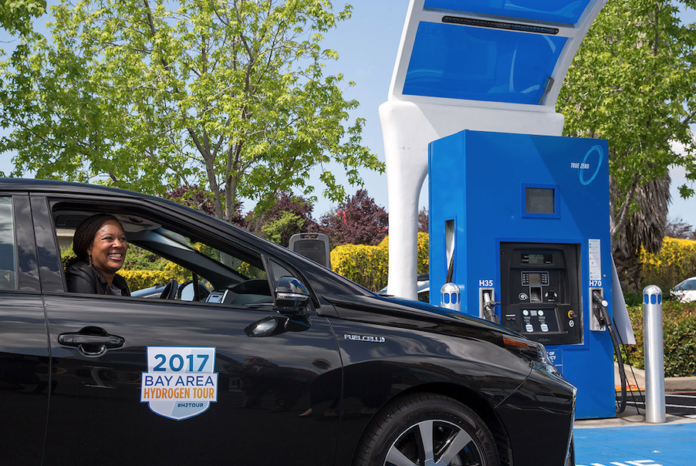The California Energy Commission (CEC) has approved a plan to invest up to $115 million to increase the number of fueling stations in the state that support hydrogen fuel cell electric vehicles (FCEVs). The funding nearly doubles the state’s investments to date and will help California achieve its goal to ultimately deploy 200 public hydrogen fueling stations.
The plan also supports Gov. Gavin Newsom’s executive order phasing out the sale of new gasoline-powered passenger vehicles by 2035 by providing essential infrastructure to meet the fueling needs of the increasing number of zero-emission vehicles (ZEV) anticipated on the road in the next decade. While battery electric vehicles (BEV) are the most common ZEV in the state, more than 8,000 FCEVs have also been leased or sold.
Under the plan, up to 111 new hydrogen fueling stations will be built in the state by 2027, including many designed for multi-use by passenger vehicles, trucks and buses. Total project funding is subject to annual approval of both the state budget and allocations from the CEC.
To date, the CEC has funded 45 open retail hydrogen stations with an additional 16 under construction. Altogether, with its recently approved plan, there could be up to 179 stations in the state, including seven privately funded stations. Commissioners awarded three grants totaling nearly $25 million for the installation of the first 30 stations under the plan. More than half of the stations approved will be built in or near disadvantaged communities.
Irvine-based FirstElement Fuel Inc., received $15.5 million. San Francisco-based Equilon Enterprises (doing business as Shell Oil Products U.S.) received $7.3 million and the Santa Clara-based Iwatani Corp. of America received $1.9 million. First Element Fuel also received $5 million from the Volkswagen (VW) Environmental Mitigation Trust, a nationwide program that provides funding for states to mitigate the excess NOx emissions caused by VW’s use of illegal emissions testing defeat devices in their diesel vehicles. The additional funds are designed to accelerate the development of additional hydrogen fueling stations in California.
“We are proud to support these important infrastructure projects to ensure fueling is available as more Californians choose clean cars and trucks,” says Patty Monahan, commissioner at CEC. “As the zero-emission vehicle market grows, drivers need to feel confident that they can refuel their vehicles, whether they are downtown or driving across the state.”
The grants were awarded through the CEC’s Clean Transportation Program, which invests more than $100 million annually to support transportation-related innovations and accelerate the development and deployment of advanced transportation and fuel technologies. About $20 million from the program – the maximum allowable under state law – is invested each year to support an initial network of at least 100 public hydrogen stations.
More details on California’s hydrogen investments are available in the 2020-2023 Investment Plan Update for the Clean Transportation Program, here.







As far as setting up the refueling infrastructure is concerned, green hydrogen, blue hydrogen, and gray hydrogen are all the same. Indeed, gray hydrogen should be used first because it’s already here and can easily help us set up and test the new delivery network. Once we have it in place and things are working, we can then shift to blue hydrogen and ultimately to green. This is the sound way of doing things and the way we’ve done things before. So stop conflating the source of the hydrogen with the means of delivering it. One has nothing to do… Read more »